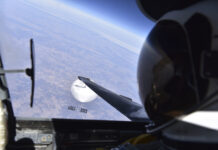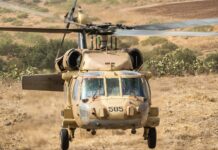The US Army’s Handheld, Manpack, Small Form Fit (HMS) programme is the most ambitious tactical communications modernisation programme the United States armed forces have ever seen.
The US Army is supervising an acquisition that delivers new radios to itself, the US Navy, US Marine Corps (USMC) and US Air Force (USAF). The initiative falls under the purview of the army’s Programme Executive Office for Command, Control and Tactical Communications (PEO C3T). Eight separate radios are being delivered, all of which will equip land forces manoeuvre units in these respective services.
As an official US Department of Defence (DOD) document makes clear, new radios being delivered via the HMS programme provide Line-of-Sight (LoS) and Beyond LoS (BLoS) voice and data communications. LoS communications are provided using Very/Ultra High Frequency (V/UHF; 30 MHz – 3 GHz) links. BLoS communications are provided using Satellite Communications (SATCOM) and High Frequency (HF; 3-30MHz) links. The radios will carry both classified and unclassified traffic.
The Radios
HMS encompasses the delivery of handheld systems for dismounted troops and backpack radios for vehicles and platforms, dismounted troops and static bases. Production contract awards for the handheld radios were made in April 2015. Similar contracts for the backpack systems followed in February 2016. Details of the radios being delivered are presented in figure-1. An Initial Operational Capability (IOC) for the Thales/General Dynamics AN/PRC-154A Rifleman handheld radio was declared in 2012. The IOC for the General Dynamics AN/PRC-155 backpack transceiver was declared two years later. US DoD documents from 2019 state that 100,000 AN/PRC-163 Leader handheld radios will eventually be acquired. These will be joined by 21,579 AN/PRC-154A and 104,496 Combat Net Radio (CNR) single-channel systems. A total of 73,064 backpack radios of all types will be delivered, 65,622 of which will equip the army.
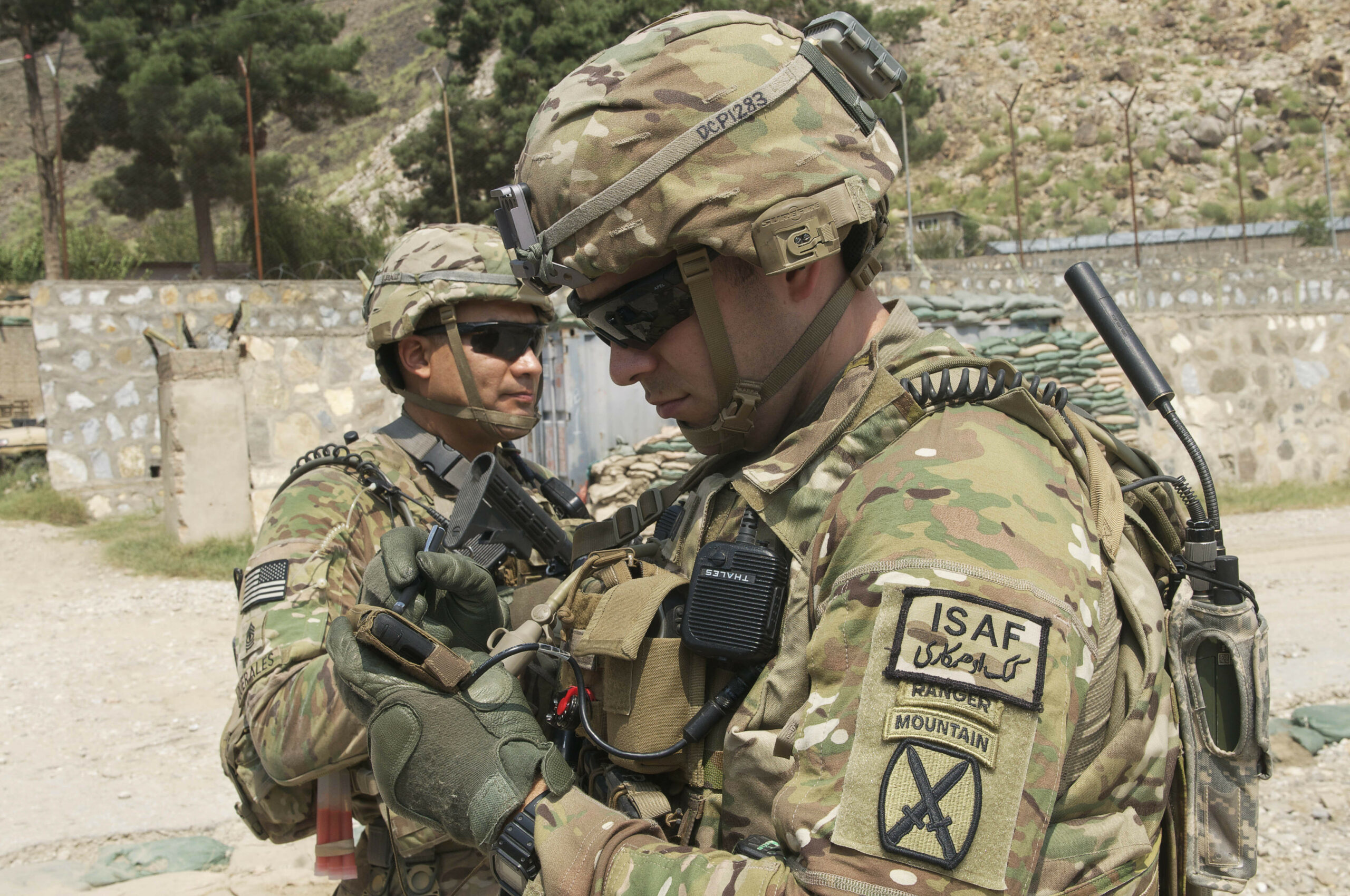
Thales is providing the CNR along with L3Harris. The company told the author that deliveries of its two-channel AN/PRC-148 Improved Multiband Inter/Intra Team Radios (IMBITR) began in 2018. These already equip US Army Security Force Assistance Brigades (SFABs). SFABs provide training and advice to foreign militaries overseas. The company expects the Leader radio component of the HMS programme to conclude in 2025. That said, Thales anticipates follow-on contracts as fielding of the radios continues. “Thales has currently delivered over 10,000 two-channel IMBITR systems and anticipates that number to be three to five times higher prior to the completion of the HMS programme,” it disclosed in a written statement. Although the handheld Leader radios are particularly suitable for dismounted team leaders, they can also be used in a vehicle-mounted configuration. This usually occurs when a vehicle is not required to use SATCOM. A written statement provided by the PEO C3T adds that “the Leader radio is fielded largely at and below company level down to team leader level.”
The Integrated Visual Augmentation System (IVAS) also falls under the HMS programme. The army is working with Microsoft to deliver a head-up display for troops under the IVAS programme. The radios will let soldiers upload imagery to a tactical cloud during operations. The office estimates that up to 120,000 single channel data radios could eventually be acquired to support IVAS. Two single channel data radios have been selected to equip IVAS in the guise of the Silvus’ SM-4210 and DTC’s SDR-I.
Backpack radios “are deployed across the formation,” the PEO C3T written statement says. They are furnished in a “variety of configurations including single vehicle mounted backpacks, dual vehicle mounted, dismounted and Tactical Operations Centre (TOC),” the latter example would include headquarters. Backpack radios deployed with the lowest echelons “are typically (used by) the radio telephone operator, at company and above, as well as above brigade. Manpacks are also mounted into many fires, airborne, and other specialty platforms across the army.”
As they have two channels, the backpack radios can host at least two networks. For example, a battalion commander could have their subordinate company network on one channel, the brigade network on another. This lets them share voice and data traffic between these two networks. From a command perspective, this is imperative. Two backpack radios are being procured via HMS: General Dynamics provides the AN/PRC-155 while Collins Aerospace furnishes the AN/PRC-162. Basic specifications for both these radios are presented in Figure-1. Preston E. Johnson II, business development director for tactical communications at Collins Aerospace, said that full rate production deliveries of the AN/PRC-162 commenced in 2021. These radios are delivered under the terms of an Indefinite Delivery/Indefinite Quantity (IDIQ) contract that concludes in 2025. However, Johnson stated that “the army’s acquisition objective will not have been met by that point, so we are anticipating they will have another IDIQ contract to follow the current one.” He adds that “we don’t have an estimate of when deliveries will conclude at this point. That depends entirely on the army’s assessment of how many radios they ultimately want to procure.”
AN/PRC-162 radios are currently being deployed with the army’s active-duty manoeuvre brigades, said Johnson. These comprise the circa 23 armoured, mechanised infantry, light infantry and air manoeuvre brigade combat teams (BCTs) fielded by the army. He adds that some limited AN/PRC-162 deliveries are going to army Multi-Domain Task Forces (MDTF). The MDTF concept addresses regional Anti-Access/Area Denial postures (A2/AD) such as those of the People’s Republic of China. Primarily expeditionary in their nature, they comprise strategic fires and air defence battalions, alongside a brigade support battalion. The MDTF’s intelligence, information, cyber, electronic warfare and space battalion includes two military intelligence companies, a signal company, information defence company and an extended range sensing and effects company.
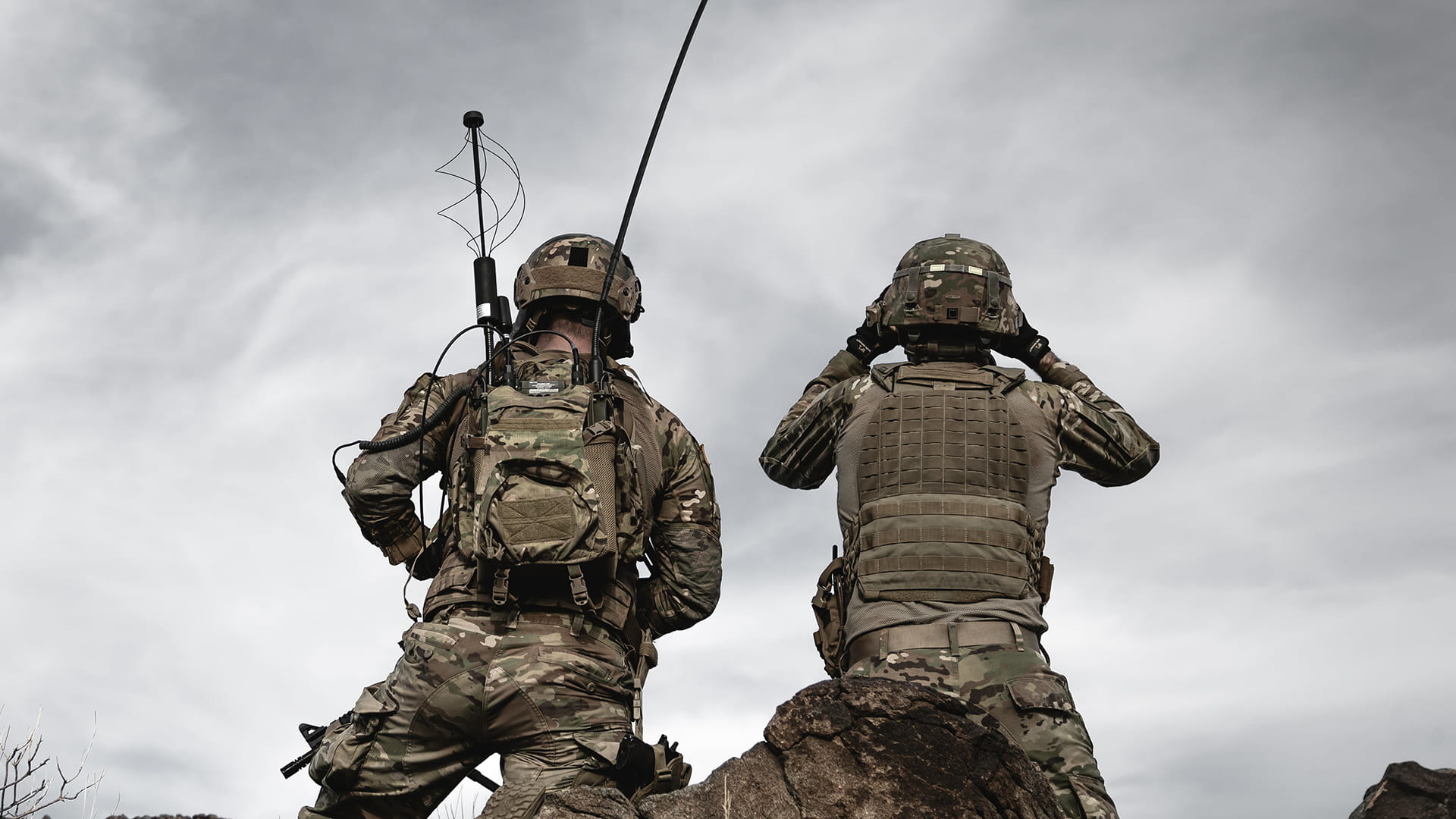
Waveforms
Waveforms are at the heart of the HMS initiative: “HMS radios will carry secure voice and digital data through SINCGARS (Single Channel Ground and Airborne Radio System), ANW2 (Army Networking Waveform-2) data including Position Location Information (PLI). Clear voice, secure voice, and imagery data (is carried) through TSM (Tactical, Scalable, Mobile Ad-Hoc Network), WREN TSM (Warrior Robust Enhanced Network Narrowband TSM), and WREN NB (WREN Narrowband), as well as PLI and secure voice/data through SATCOM waveforms,” the PEO C3T statement continued.
A waveform is essentially an instruction from a software programme. It instructs the radio to behave in a particular way to perform a specific task. For example, the signal for ground communications from one radio to another across a LoS range may need less power than one used for communications with an aircraft overhead. The latter may need more amplification to reach the pilot who is comparatively far away. Using software to configure the radio saves the operator the fiddly task of having to manually tune their radio to do this.
Since the early 1990s, the standard waveform in use with US land manoeuvre units for ground communications is SINCGARS. The new HMS radios entering service will carry the SINCGARS waveform despite the eventual phase out of SINCGARS radios. HMS transceivers are not being procured and implemented in a ‘switch-off/switch-on’ fashion. New radios are entering service as legacy systems reach the end of their lives. Having the SINCGARS waveform in the new radios ensures they can communicate with legacy systems and vice versa. This is imperative to preserve interoperability.
Despite SINCGARS’ eventual sunset, the waveform still has a lot of life left. One of the lessons of the first Russian invasion of Ukraine in 2014 was SINCGARS’ resilience. The US government supplied L3Harris RF-7800V Falcon-3 radios equipped with the SINCGARS waveform to Ukraine. The Russian Army had deployed significant electronic warfare assets into theatre. Systems like the army’s B-301B Borisoglebsk-2, RB-531B Infauna and R-330Z Zhitel electronic warfare platforms are designed to detect and jam V/UHF radio signals. SINCGARS held up well despite the levels of jamming thrown at it. No doubt taking lessons learned from the Ukrainian theatre, the PEO C3T has embarked on the waveform’s modernisation. SINCGARS FH3 supersedes the existing SINCGARS FH2/CT2 waveform variant. SINCGARS FH3 underwent evaluation at the US Army’s Yuma proving ground in Arizona. Modifications earmarked for the waveform include improvements to its transmission and communications security. This comprises the implementation of the US National Security Agency’s Advanced Encryption Standard-256 (AES-256).
SINCGARS will eventually make way for the WREN-TSM waveform. This carries voice and data traffic to support the army’s Nett Warrior dismounted situational awareness system. “Recent upgrades to the TSM waveform include WREN, providing up to Secret voice and data and WREN-NB, providing spectrum efficient, EW survivable voice and data in contested environments,” says the PEO C3T’s written statement.
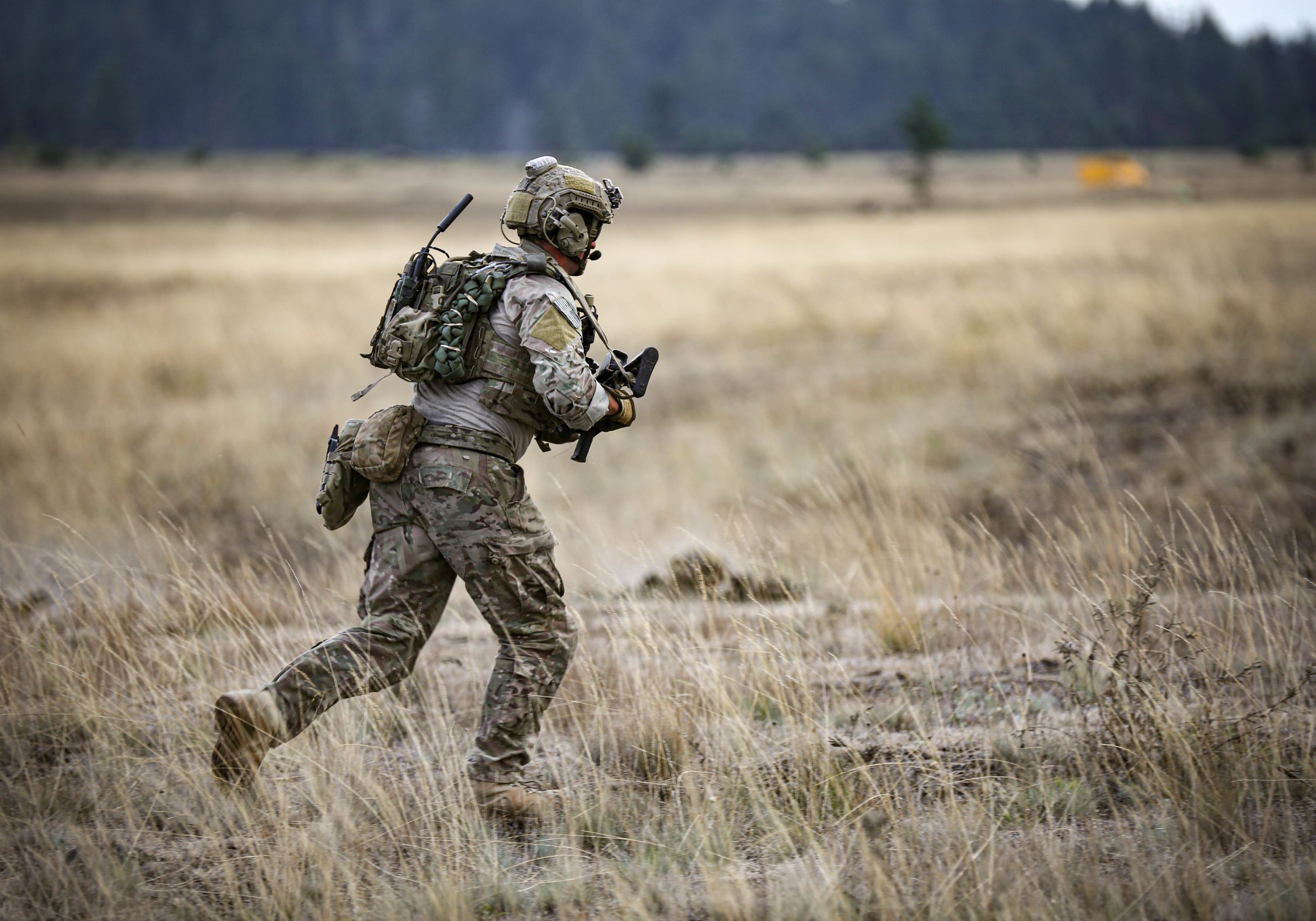
Procurement methodology
The PEO C3T told the author via its written statement that the HMS programme achieved full rate production in August 2021 for the backpack and Leader radios. This followed the completion of testing during an Initial Operational Test and Evaluation event in January 2021. The radios are fielded to active units on a year-by-year basis according to available funding, the statement continued. “Industry competes among multiple vendors for each product line on a yearly basis.” This is to “both increase capability based on upgrades from objective to threshold requirements, while decreasing cost.” Moreover, although the programme is led by the army, its sister services, primarily the USMC, have also procured new radios via this route.
An analysis of publicly available figures drafted by the US DoD reveals an estimated circa 300,000 radios of all types could eventually be acquired by navy, army, USAF and USMC. The lion’s share will, unsurprisingly, equip the army. Around 290,000 radios should eventually be delivered by the time these are expected to conclude in circa 2033. The next biggest recipient is likely to be the USAF acquiring almost 5,000. The US Marine Corps is expected to acquire over 2,300 radios, with the Navy receiving about 200. An analysis of the programme’s overall costs, including research and development activities, plus testing, production and deliveries gives an average unit cost of USD 88,300 per radio. The actual ‘fly away’ cost of purchasing each radio from its manufacturer is likely to be much less. Costs will also vary according to whether the radio is a single or two-channel handheld or backpack radio.
The HMS programme has come a long way since the days of the Joint Tactical Radio System (JTRS) initiative. JTRS, or ‘Jitters’ to the tactical communications community, became a programme of record to overhaul army tactical communications. However, it suffered significant problems leading to its cancellation in 2011. Contemporary reports said JTRS had delivered no radios but had cost the taxpayer USD 6 Bn. Despite the cancellation the army and America’s forces writ large still needed new tactical communications. As a result, the HMS programme was born to learn the mistakes of the past and get the forces the radios they needed. Lessons have clearly been learned. New radios are in soldier’s hands equipped with legacy and state-of-the-art waveforms. The future looks bright for US army tactical communications.
Figure 1 – Selected HMS Programme Radio Procurements
| Manufacturer | Radio | Type | User | Frequencies | Selected Waveforms |
| Thales | Combat Net Radio | Single channel handheld radio | Individual soldier radio | V/UHF: 30-512MHz |
SINCGARS, HAVEQUICK, IW, APCO-25 |
| L3Harris | Combat Net Radio | Single channel handheld radio | Individual soldier radio | V/UHF: 30-512MHz |
SINCGARS, HAVEQUICK, IW, APCO-25 |
| Collins Aerospace | AN/PRC-162 | Two channel backpack radio | Vehicle mounted, dismounted, fixed site | V/UHF: 30 MHz-1.850 GHz |
SRW, MUOS, SINCGARS, WREN TSM, IW, MUOS, SATURN, HAVEQUICK |
| L3Harris | AN/PRC-163 Leader Radio | Two channel handheld radio for team leaders and above | Team, squad, platoon leaders. | V/UHF: 30 MHz- 2.6 GHz |
SINCGARS, APCO-25, SATURN, HAVEQUICK, MUOS, TSM, UHF SATCOM |
| L3Harris | AN/PRC-158 | Two channel backpack radio | Vehicle mounted, dismounted, fixed site | V/UHF: 30 MHz- 1.850 GHz |
SRW, MUOS, SINCGARS, WREN TSM, IW, MUOS, SATURN, HAVEQUICK |
| L3Harris | AN/PRC-163(V)2/3 Leader Radio | Two channel handheld radio for team leaders and above | Team, squad, platoon leaders. | V/UHF: 30 MHz- 2.6 GHz |
SINCGARS, APCO-25, SATURN, HAVEQUICK, MUOS, TSM, UHF SATCOM |
| Thales | AN/PRC-148C/D MBIRT/IMBITR Leader Radio | Two channel handheld radio for team leaders and above | Special operations forces | V/UHF: 30-512 MHz |
HAVEQUICK, SINCGARS, WREN-TSM |
Figure 2 – HMS Radio Waveforms
| Waveform | Frequency | Purpose |
| ANW2 (Army Networking Waveform-2) | UHF | Data communications between dismounted troops, vehicles and command centres. |
| APCO-25 | UHF | Used for first responder communications in the United States. |
| HAVEQUICK | V/UHF | Air-to-surface/surface-to-air tactical voice and data communications. |
| HF SSB with ALE (High Frequency Single Sideband with Automatic Link Establishment) | HF | Long-range over-the-horizon backhaul. |
| IW (Integrated Waveform) | UHF | Tactical SATCOM. |
| MUOS (Mobile User Objective System) | V/UHF | Tactical SATCOM. |
| SATURN (Second Generation Anti-Jam Tactical UHF Radio for NATO) | V/UHF | Surface-to-surface/air-to-surface/surface-to-air tactical voice and data communications. |
| SRW (Soldier Radio Waveform) | UHF | Surface-to-surface tactical voice and data traffic. |
| SINCGARS (Single Channel Ground and Airborne Radio System) | VHF | Surface-to-surface/air-to-surface/surface-to-air tactical voice and data communications. |
| TSM (Tactical, Scalable, Mobile Ad-Hoc Network)
WREN-TSM (Warrior Robust Enhanced Network Narrowband TSM) WREN NB (WREN Narrowband) |
V/UHF | Surface-to-Surface tactical voice and data traffic. |
| UHF SATCOM | UHF | Tactical SATCOM |
| WNW (Wideband Networking Waveform) | V/UHF | Tactical voice and data traffic. |
Thomas Withington




![Countering the aerial threat Based at NAS Key West in Florida, US Naval reserve squadron VFC-111 operates the F-5N Tiger II in the aggressor role. [USMC/SSgt Dengrier Baez]](https://euro-sd.com/wp-content/uploads/2025/06/A1-Kopie-218x150.jpg)


